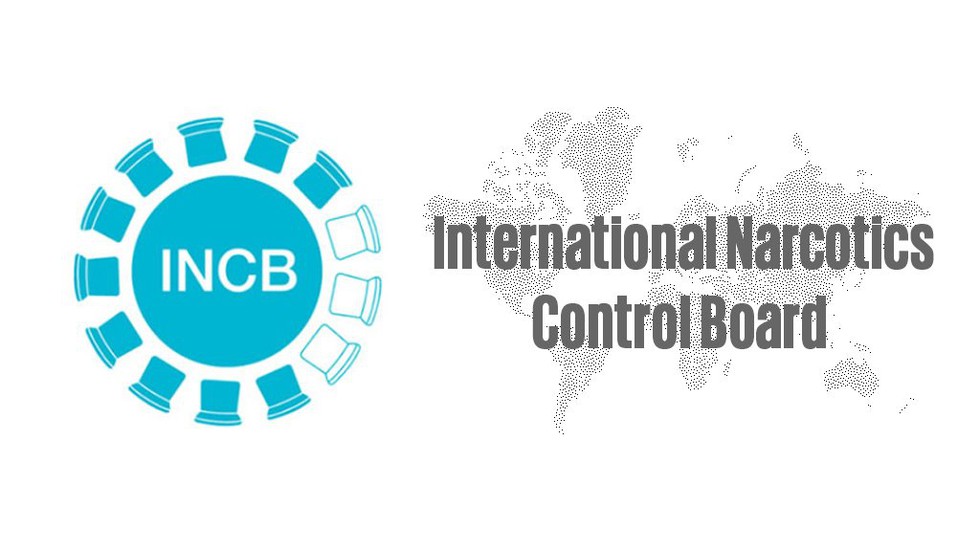
About International Narcotics Control Board:
- It was established in 1968 and is the independent and quasi-judicial monitoring body for the implementation of the United Nations international drug control conventions.
- History
- It was established by the Single Convention on Narcotic Drugs of 1961 by merging two bodies: the Permanent Central Narcotics Board, created by the 1925 International Opium Convention; and the Drug Supervisory Body, created by the 1931 Convention for Limiting the Manufacture and Regulating the Distribution of Narcotic Drugs.
- Members:
- It consists of 13 members who are elected by the Economic and Social Council and who serve in their personal capacity, not as government representatives.
- Three members with medical, pharmacological or pharmaceutical experience are elected from a list of persons nominated by the World Health Organization (WHO) and 10 members are elected from a list of persons nominated by Governments.
- Mandate: INCB endeavours in cooperation with Governments, to ensure that adequate supplies of drugs are available for medical and scientific uses and that the diversion of drugs from licit sources to illicit channels does not occur.
- It also monitors Governments' control over chemicals used in the illicit manufacture of drugs and assists them in preventing the diversion of those chemicals into illicit traffic.
2. Jenu Kuruba community
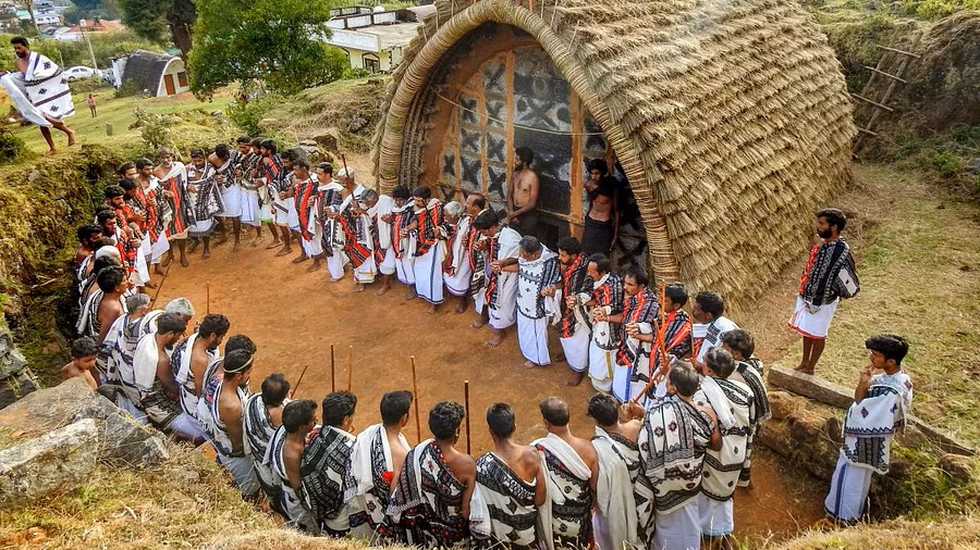
About Jenu Kuruba community:
- Jenu in Kannada means honey and kuruba is the caste. As the name suggest Jenu Kurubas are honey gatherers.
- They are traditional honey gathering tribe and are among the original inhabitants of the forests of the Western Ghats that stretch over three States – Karnataka, Kerala and Tamil Nadu.
- They live in small settlements called Hadi.
- Occupation: The main occupation used to be food gathering in the forests, collection of minor forest produce in the forests, collection of minor forest produce including honey
- They practice shifting cultivation, leading to a nomadic lifestyle.
- Social life: People of this community live a semi-nomadic lifestyle which is not maintained by rulers, police, centralized visible forces or religious monasteries; but by the technique of its own discipline and diffused power.
- The pattern is that it is maintained at each settlement level with a head-man (yajamana) and a ritual head / shaman (gudda).
3. Coordinated Lunar Time (LTC)

About Coordinated Lunar Time (LTC):
- It will provide a time-keeping benchmark for lunar spacecraft and satellites that require extreme precision for their missions.
- It will also synchronise the communication between satellites, astronauts, bases and the Earth.
- A unified time standard would be essential for coordinating operations, ensuring the reliability of transactions and managing the logistics of lunar commerce.
- Why there is need of LTC?
- As there is less gravity on the Moon, time ticks slightly faster there relative to the time on the Earth.
- In other words, for someone on the Moon, an Earth-based clock will appear to lose on average 58.7 microseconds per Earth day with “additional periodic variations”.
- It can create problems for situations such as a spacecraft seeking to dock on the Moon, data transferring at a specific time, communication, and navigation.
How does Earth’s time standard work?
- Most of the clocks and time zones of the world are based on Coordinated Universal Time (UTC) which is essentially internationally agreed upon standard for world time.
- It is set by the International Bureau of Weights and Measures in Paris, France.
- It is tracked by a weighted average of more than 400 atomic clocks placed in different parts of the globe.
- Atomic clocks measure time in terms of the resonant frequencies — the natural frequency of an object where it tends to vibrate at a higher amplitude — of atoms such as cesium-133.
- In atomic time, a second is defined as the period in which a caesium atom vibrates 9,192,631,770 times. As the vibration rates at which atoms absorb energy are highly stable and ultra-accurate, atomic clocks make for an excellent device for gauging the passage of time.
- To obtain their local time, countries need to subtract or add a certain number of hours from UTC depending on how many time zones they are away from 0 degree longitude meridian, also known as the Greenwich meridian.
- If a country lies on the west of the Greenwich meridian, it has to subtract from the UTC, and if a country is located on the east of the meridian, it has to add.
4. Rhamphicarpa fistulosa
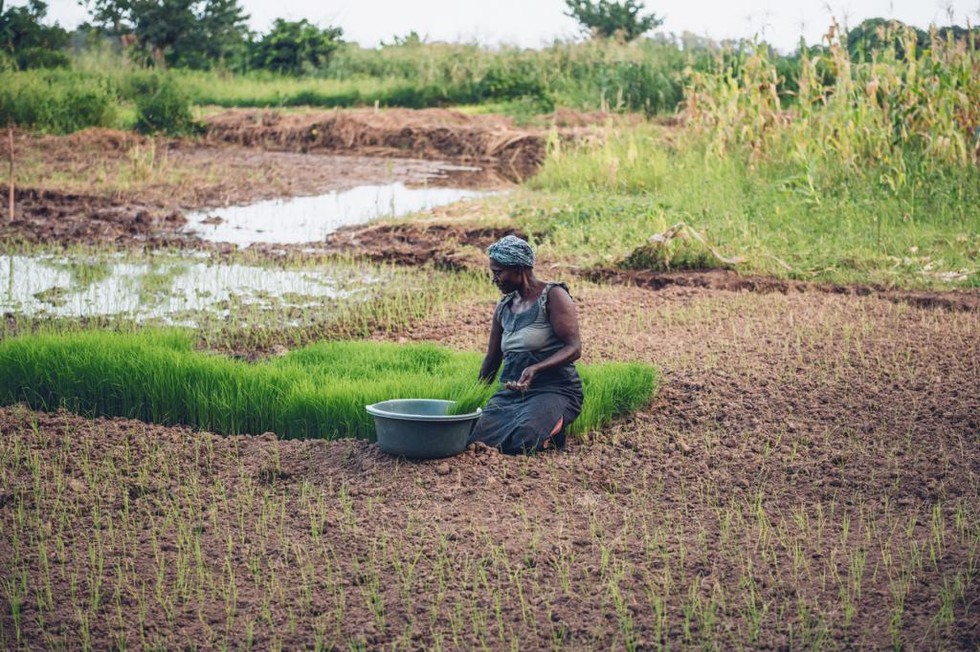
About Rhamphicarpa fistulosa:
- It is a facultative, parasitic weed that grows on rice which is also known as rice vampireweed.
- It also affects sorghum and maize and, potentially, other cereal crops.
- The weed can germinate and grow independently but significantly increases its reproductive output when parasitizing a suitable host.
- It is not controlled by fertilisers.
- It is found in at least 35 countries in Africa, with 28 of them home to rainfed lowland rice areas.
- Countries with the highest estimated infestation rates were Gambia, Senegal, Burkina Faso, Togo and, to a lesser extent, Mauritania, Guinea-Bissau, Benin, Malawi and Tanzania.
What is a parasitic plant?
- It depends on other plants for part or all of their nutrition. They parasitize by making a xylem-to-xylem connection with the host plant using a specialized organ called haustorium.
- Through this connection the parasite extracts water, nutrients and metabolites and alters the plant growth regulators of the host, resulting in stunted growth and losses in reproductive output of the host plant.
- Obligate parasite, also known as a holoparasite, is an organism which fails to complete or continue its life cycle without a host. The presence of the host organism is essential for an obligate parasite for reproduction and survival.
- The facultative parasite is a kind of parasite which is able to complete its life cycle even without a host organism. It can either live independently from the host or dependently with the host in contrast to an obligate parasite.
5. Hepatitis
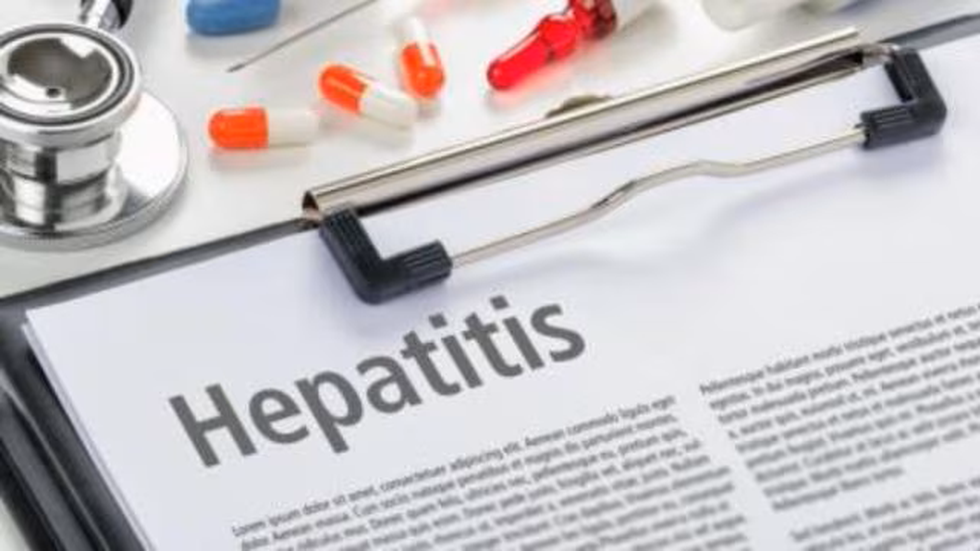
About Hepatitis:
- Hepatitis is inflammation of the liver.
- It can be an acute (short-term) infection or a chronic (long-term) infection.
- There are different types of hepatitis, with different causes:
- Viral hepatitis: It is the most common type and is caused by one of several hepatitis viruses A, B, C, D and E.
- Alcoholic hepatitis is caused by heavy alcohol use.
- Toxic hepatitis can be caused by certain poisons, chemicals, medicines, or supplements.
- Autoimmune hepatitis is a chronic type in which your body's immune system attacks your liver. The cause is not known, but genetics and one’s environment may play a role.
- How is viral hepatitis spread?
- Hepatitis A and E are usually spread through contact with food or water that is contaminated with an infected person. You can also get hepatitis E by eating undercooked food.
- Hepatitis B, C and D spread through contact with the blood of someone who has the disease.
- Hepatitis B and D may also spread through contact with other body fluids. This can happen in many ways, such as sharing drug needles or having unprotected sex.
- Symptoms: Some people with hepatitis do not have symptoms and do not know they are infected. Common symptoms include: Fever, Fatigue, Loss of appetite, Nausea and/or vomiting etc.
- Treatment: Treatment for hepatitis depends on which type one has and whether it is acute or chronic. Acute viral hepatitis often goes away on its own. There are different medicines to treat the different chronic types of hepatitis.
6. What is Section 451 of Code of Criminal Procedure (CrPC)?

About Section 451 of CrPC:
- The title of the section states, “order for custody and disposal of property pending trial in certain cases”.
- It deals with the interim disposal of property before finally concluding the case.
- The provision provides that when any property is produced before any criminal court, the court may order for proper custody of the property pending the conclusion of the inquiry and trial, and seeing the nature of the property, e., speedy or natural decay, the court may order its sale or disposal.
- For the purpose of this section, property includes:
- Property of any kind or document which is produced before the Court or which is in its custody.
- Any property regarding which an offence appears to have been committed or which appears to have been used for the commission of any offence.
- The court can issue orders, including interim ones, for the proper custody and disposal of property or documents which fall within any one of the above categories.
- The nature of the property should be seen before disposing of or deciding the custody of the property.
- It empowers the court to dispose of the perishable properties first and retain properties that are needed for the purpose of trial.
- Section 451 is not confined to natural decay alone but extends to other ways of damage which require expedient disposal.
- The court holds discretionary power to decide the method of disposal according to the facts and the circumstances of the case.
- Methods of disposal: The property can be disposed of by either destruction, confiscation, or delivering or giving the property to a person claiming to be entitled to such property and thus restoring it to the dispossessed, selling it off, etc.
- The court, however, has no jurisdiction to direct the disposal of any property without producing it before the court in either physical or symbolic form. The symbolic production is done by filing records or reports about such a seizure.
- The order under Section 451 of the CrPC is an interlocutory one in nature but not final. This is because it needs to be revised on some occasions, depending on the circumstances.
7. What is Higgs Boson?
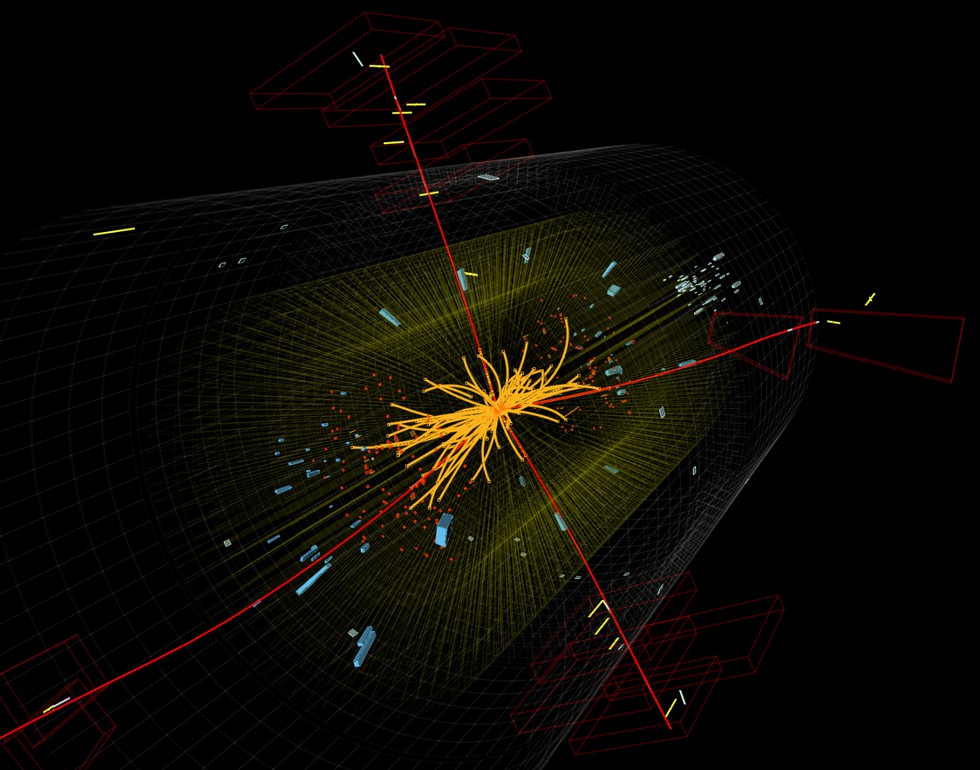
About Higgs Boson:
- The Higgs boson is the fundamental force-carrying particle of the Higgs field, which is responsible for granting fundamental particles their mass.
- This field was first proposed in the mid-sixties by Peter Higgs, for whom the particle is named.
- The particle was finally discovered in 2012, by researchers at the Large Hadron Collider (LHC), the most powerful particle accelerator in the world, located at the European particle physics laboratory CERN, Switzerland.
- The LHC confirmed the existence of the Higgs field and the mechanism that gives rise to mass and thus completed the standard model of particle physics.
- It is one of the 17 elementary particles that make up the Standard Model of particle physics, which is scientists' best theory about the behaviours of the universe's most basic building blocks.
- Higgs boson plays such a fundamental role in subatomic physics that it is sometimes referred to as the "God particle."
- Features:
- The Higgs boson has a mass of 125 billion electron volts, meaning it is 130 times more massive than a proton.
- It is also chargeless with zero spin, a quantum mechanical equivalent to angular momentum.
- It is the only elementary particle with no spin.
- What is a Boson?
- A boson is a "force carrier" particle that comes into play when particles interact with each other, with a boson exchanged during this interaction. For example, when two electrons interact, they exchange a photon, the force-carrying particle of electromagnetic fields.
- Because quantum field theory describes the microscopic world and the quantum fields that fill the universe with wave mechanics, a boson can also be described as a wave in a field.
- So, a photon is a particle and a wave that arises from an excited electromagnetic field, and the Higgs boson is the particle or "quantized manifestation" that arises from the Higgs field when excited.
- That field generates mass via its interaction with other particles, and the mechanism carried by the Higgs boson called the Brout-Englert-Higgs mechanism.
- Particles that interact — or "couple" — with the Higgs field more strongly are granted greater masses.
- Even the Higgs boson itself gets its mass from its own interaction with the Higgs field.
- One particle not granted mass by the Higgs field is the basic particle of light, the photon. This is because spontaneous symmetry breaking doesn't happen for photons as it does for its fellow force-carrying particles.
- This mass-granting phenomenon also only applies to fundamental particles like electrons and quarks. Particles like protons, made up of quarks, get most of their mass from the binding energy that holds their constituents together.
8. What is C-Dome?
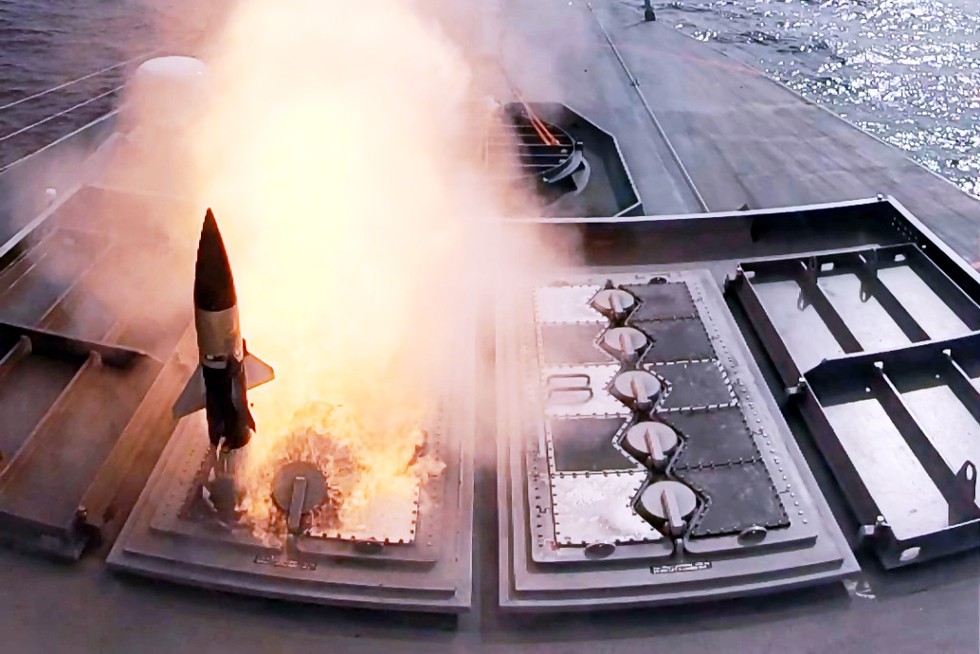
About C-Dome:
- It is a naval version of Israel’s Iron Dome air defence system, used to shield against rocket and missile attacks.
- The Iron Dome, which was activated in 2011 and has an effectiveness of about 90%, works by using radars to detect short-range rockets before destroying them with its own missiles.
- The C-Dome, which was first unveiled in 2014, declared operational in 2022,works similarly to the Iron Dome, using some of the same technology, except that it’s mounted on ships.
- It is mounted on Sa’ar 6-class corvettes, German-made warships, and uses the same interceptor as the Iron Dome.
- Unlike the Iron Dome, which has its own dedicated radar, the C-Dome is integrated into the ship’s radar to detect incoming targets.
- C-Dome ensures full-circular vessel protection and high kill probability against a full spectrum of modern threats—maritime and coastal.
Key Facts about Iron Dome:
- It is Israel’s air missile defense system that can defend against short-range rockets, intercepting them in the air above the state.
- It is capable of successfully handling multiple rockets at a time.
- Developed by Rafael Advanced Defense Systems and Israel Aerospace Industries, the system became operational in 2011.
- Features:
- It is powered by missile-defense batteries.
- It has all-weather capabilities and is able to function night or day.
- It can launch a variety of interceptor missiles.
- It is designed to shoot down missiles with a range of about 40 miles or less.
- It also has the ability to be moved, either onto ships or across land, to better suit defense needs.
- It must be reloaded to continuously intercept incoming missiles.
- The Iron Dome operates through three main components:
- a radar that detects incoming rockets,
- a command-and-control system that determines the threat level,
- an interceptor that seeks to destroy the incoming rocket before it strikes.
9. What is Kala Azar?
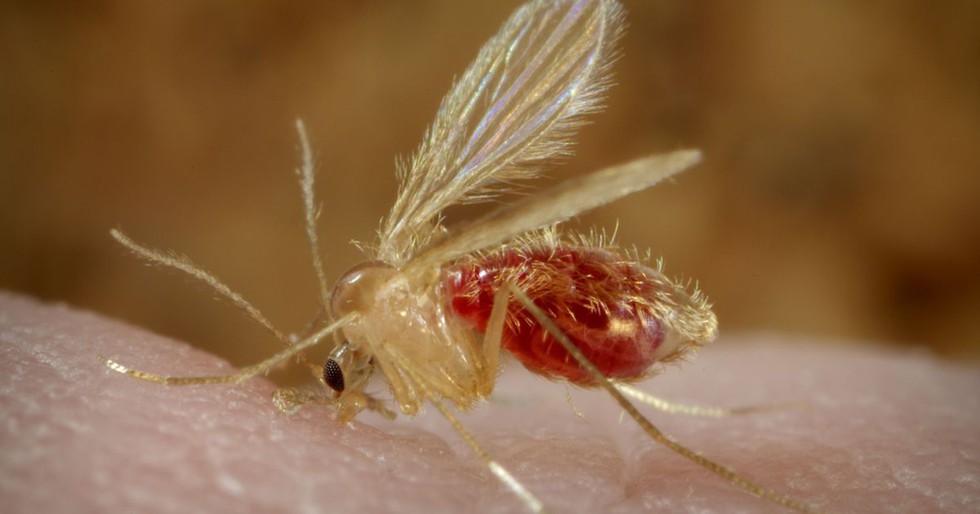
About Kala Azar:
- Kala azar, or visceral leishmaniasis, is the second deadliest parasitic disease in the world after Malaria.
- It is one of the most dangerous Neglected Tropical Diseases (NTDs) and is endemic in 76 countries.
- It is also known as black fever or Dum-Dum fever, referring to the greyish or blackish discoloration of the skin during infection.
- It is caused by a protozoan parasite of the genus Leishmania, which is transmitted by the bite of infected female phlebotomine sandflies.
- In India, Leishmania donovani is the only parasite causing this disease.
- The parasite primarily infects the reticuloendothelial system and may be found in abundance in the bone marrow, spleen, and liver.
- Post Kala-azar Dermal Leishmaniasis (PKDL) is a condition when Leishmania donovani invades skin cells, resides and develops there, and manifests as dermal leisions. Some of the kala-azar cases manifests PKDL after a few years of treatment.
- The disease affects some of the poorest people and is linked to malnutrition, population displacement, poor housing, a weak immune system, and a lack of financial resources.
- Leishmaniasis is also linked to environmental changes such as deforestation, and urbanisation, according to the WHO.
- Symptoms:
- Kala-azar is characterized by irregular bouts of fever, substantial weight loss, swelling of the spleen and liver, and severe anaemia.
- If the disease is not treated early and in time, affected individuals can die within two years.
- Treatment:
- Treatment of Kala Azar is done through liposomal AmB; this is the drug of choice for immunocompetent patients.
- There are other treatment options available, such as paromomycin, miltefosine, and multidrug therapy.
10. Key Facts about Tons River
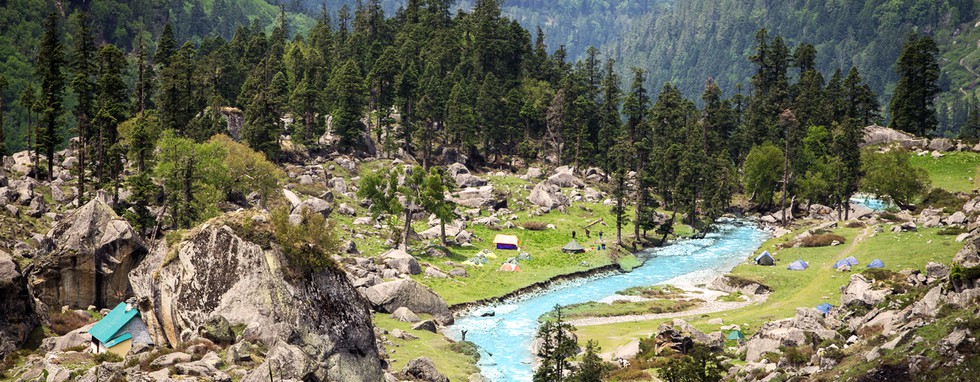
About Tons River:
- It is the largest and most important tributary of the Yamuna.
- It is one of the perennial rivers emerging from the Himalayas.
- Course:
- It originates at a height of 6,315 metres from the Bandarpunch Mountain in Uttarakhand.
- It flows through the Garhwal region of Uttarakhand and touches Himachal Pradesh.
- Surging from that great height, the glacier-fed river’s course ends when it meets the Yamuna River.
- It joins Yamuna near Kalsi in the Dehradun district, Uttarakhand.
- It has a length of about 200 km.
- Along the way, the river cuts through deep gorges, tranquil valleys, and dense forests.
- Tons, even being a tributary, contribute more water than Yamuna itself possesses at the point of meeting.
- Tributaries: The Pabbar and Asan rivers are the main tributaries of the Tons River.
- The Tons Valley is also culturally significant, inhabited by indigenous communities like the Jaunsari and Bhotiya tribes, who have their own unique traditions, dialects, and lifestyles.


























































































































































.png)
.png)
.png)
.png)
.png)


.png)
.png)
.png)





.png)
.png)






.png)
.png)
.png)
.png)
.png)
.png)
.png)
.png)
.png)

.png)







.png)
.png)


.png)
.png)
.png)


.png)

.png)
.png)





.jpg)

.png)
.png)


.png)

.png)
.png)
.png)

.jpg)

.jpg)


.png)

.png)
.png)
.png)
.png)
.png)
.png)
.png)
.png)
.png)
.png)




.png)

.png)





.png)
.png)
.png)
.png)
.png)
.png)
.png)
.png)
.png)
.png)
.jpg)
.jpg)

.png)
.png)
.png)
.png)
.png)
.png)
.png)
.png)
.png)
.png)
.png)
.png)
.png)
.png)
.png)
.png)
.png)
.png)
.png)
.png)
.png)
.png)



.png)
.png)

.jpg)
.jpg)


.jpg)
.jpg)
.jpg)
.jpg)
.jpg)

.jpg)








.jpg)
.jpg)
.jpg)
.jpg)
.jpg)

















.jpg)
.jpg)







.jpg)


















.jpg)
.jpg)






























































































.jpg)
.jpg)


























.jpg)

.jpg)










.jpg)








.jpg)




.jpg)










.jpg)


















.jpg)












































.jpg)














.jpg)
.jpg)
.jpg)





.jpg)

.jpg)
.jpg)





































































.jpg)


































.jpg)
.jpg)
















































.jpg)












.jpg)


.jpg)




.jpg)
.jpg)
.jpg)

.jpg)
.jpg)
.jpg)
.jpg)

.jpg)
.jpg)
.jpg)

.jpg)
.jpg)
.jpg)
.jpg)
.jpg)
.jpg)
.jpg)
.jpg)

.jpg)


.jpg)
.jpg)
.jpg)
.jpg)
.jpg)
.jpg)
.jpg)
.jpg)
.jpg)
.jpg)











.jpg)
.jpg)





.jpg)
.jpg)
.jpg)
























.jpg)
























.jpg)









.jpg)
.jpg)







.jpg)
.jpg)









































.jpg)
.jpg)
.jpg)
.jpg)
.jpg)

.jpg)
.jpg)
.jpg)
.jpg)
.jpg)


.jpg)
.jpg)
.jpg)
.jpg)
.jpg)

.jpg)
.jpg)
.jpg)
.jpg)
.jpg)
.jpg)
.jpg)
.jpg)
.jpg)
.jpg)
.png)

.png)
.png)

.png)
.png)
.png)
.png)


.jpg)
.jpg)

.jpg)
.jpg)
.jpg)

.png)
.png)
.png)
.png)
.png)
.png)
.png)

.png)
.png)
.png)
.png)
.png)
.png)
.png)
.png)
.png)
.png)





































































-min.png)



.png)




.png)








































